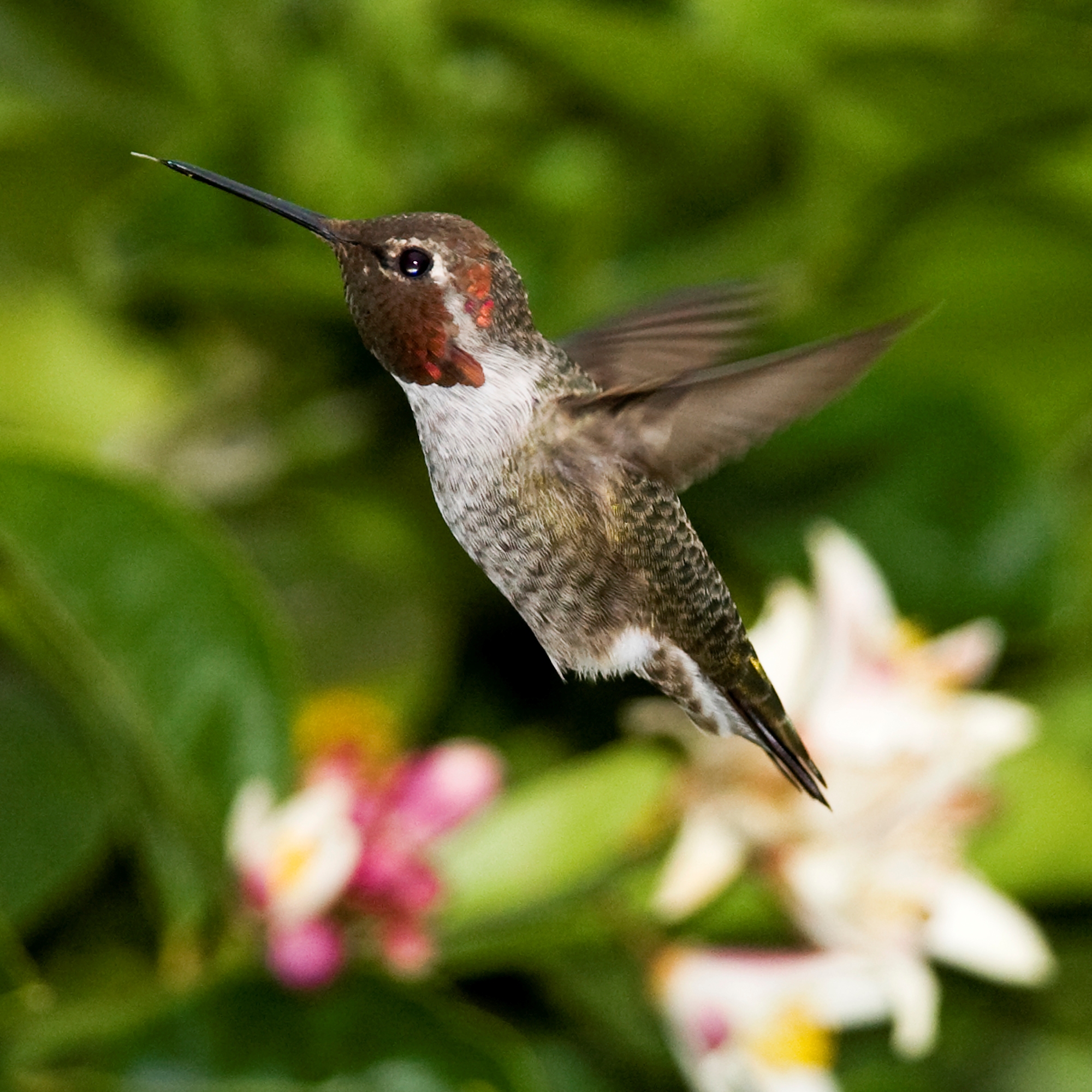Ever wonder how birds are able to control their flight direction on windy days? As humans, we are much heavier than birds and yet on windy days even we sometimes have trouble walking and have to push ourselves forward. We are using up much more energy than needed to perform the simple task of walking. So how does the daily variety of wind influence flight control and energetic expenditure of something ping-pong ball sized, like the hummingbird?
The choreography of a hummingbird’s flight revolves around one talent in particular, it is able to hover. That is why we see them so perfectly balanced in midair. Their wings are unlike that of any the other bird’s; flexible shoulders allow for the wings to be moved in a figure eight and lift can be gained from both wings. Their flight control allows for precise movements; backwards, turns on a dime and even brief intervals of upside-down. Thanks to its ability, hummingbirds are an excellent model system for studying how animal fliers move through a variety of air turbulence daily.
The researchers at University of California in Berkeley were particularly interested in these birds because of “their capacity to engage in sustained feeding bouts from flowers over a range of orientations and under challenging environmental conditions” (Ortega-Jimenez et al. 2014). They were looking to answer two questions: how expensive it is to fly in the wind and how do they manage to stay still? To perform the study they designed an environment like those car commercials we see, where the car in put into a wind tunnels to test for aerodynamics. Figure 1 shows that the hummingbirds (Calypte anna) flew within mini-wind tunnels, known as von Kármán vortex streets. Studies have shown that when it comes to animal locomotion it can be unpredictable. But, the environmental setup allowed the researchers to find that hummingbirds exhibit an increase in flight pattern variance and in the costs of flight relative to low-turbulent air.
The researchers used cylinders of varying diameters (2, 4, or 9 cm) to find the increased variability in flight change. For energy cost analysis, oxygen uptake rates were measured with an unique respiratory mask connected to a food source. Figure 2 illustrates that yes it is expensive to fly (25% more energy used) and by employing asymmetric tail and wing motions the hummingbird can maintain high stability. We see this in our own actions when we run through a windy storm or kayak through white-water rapids. We have to maintain balance by shifting our bodies or boat to keep from falling or tipping over.

Figure 2. Position of hummingbird flying in the vortex street for (a) small, (b) medium and (c) large cylinders.
Ortega-Jimenez et al.’s findings allow us to appreciate the ingenious mechanics involved in hummingbird flight stability. Compared to their small size, the increased wing movement is associated with increases in energy expenditure, but we can say that about any form of motion that is increased. The importance lies in the fact that we still know very little about animal flight performance, so it is important to increase the public’s awareness about the fascinating world of bird flight. The implications could aide in the design of better aircraft or stabilizing structures in environments with turbulent wind, like hurricane prone areas. Perhaps expanding to other birds, bats and winged insects of differing sizes can further our understanding of flight.
Ortega-Jimenez, V.M., Sapir, N., Wolf, M., Variano, E.A. & Dudley, R. (2014). Into turbulent air: size-dependent effects of von Kármán vortex streets on hummingbird flight kinematics and energetics. Proceedings of The Royal Society B, 281: 20140180


